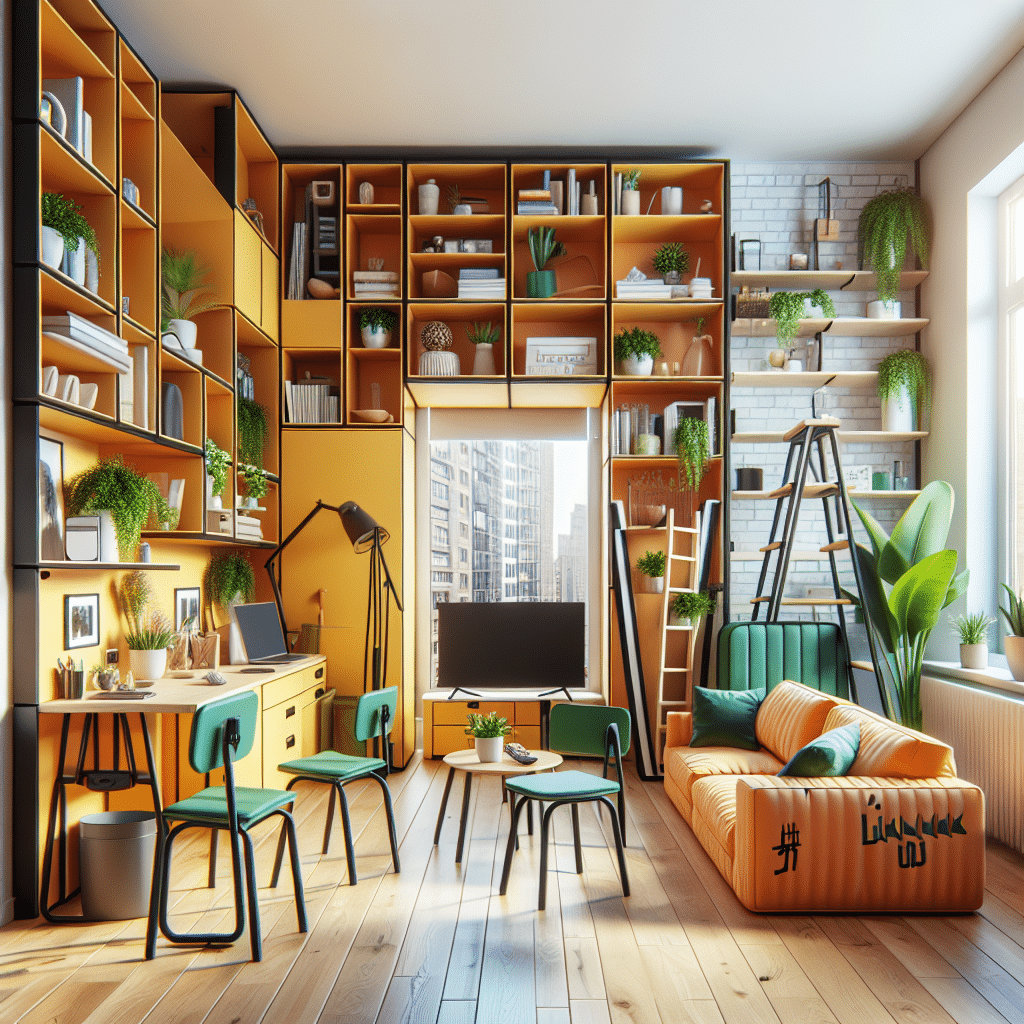Compact Furniture for Urban Living: Maximizing Small Spaces
Understanding the Need for Compact Furniture
Urban living often entails residing in smaller spaces such as apartments, studios, or micro-homes. As cities grow denser and housing prices skyrocket, the need for intelligent, space-saving solutions becomes imperative. Compact furniture meets this need by combining functionality with aesthetics, allowing residents to make the most out of limited square footage.
Benefits of Compact Furniture
-
Space Efficiency: Compact furniture is designed with dimensions that maximize usable space, making it ideal for small apartments. It helps to eliminate clutter while maintaining essential functionality.
-
Multi-functionality: Many compact furniture pieces serve dual purposes. For example, a sofa bed provides seating and sleeping space, while an ottoman can serve as storage and a coffee table.
-
Aesthetic Appeal: Compact furniture often showcases modern designs that enhance the look of a space without overwhelming it. Sleek lines and minimalist designs are common, promoting an open atmosphere.
-
Storage Solutions: Urban dwellers require innovative storage options. Compact furniture often integrates storage elements, such as under-bed drawers, built-in shelves, and foldable designs, to keep belongings organized.
Types of Compact Furniture
1. Sofa Beds
Sofa beds are quintessential compact furniture pieces, particularly valuable in studio apartments. They offer the dual functionality of seating during the day and sleeping space at night. When selecting a sofa bed, consider models that are easy to convert and have adequate mattress quality for comfort.
2. Foldable Tables
Dining tables that can be extended or collapsed are vital for small spaces. When entertaining guests, an expandable table can increase the dining area, while it can be minimized when not in use, freeing up precious floor space.
3. Nesting Tables
Nesting tables are small side tables that can be stacked together or used separately. They are versatile in purpose, suitable for both living rooms and bedrooms, and are particularly helpful when hosting guests.
4. Wall-Mounted Desks
For those working from home, wall-mounted desks save floor space and can often be folded away when not in use. This setup maintains a clean aesthetic while providing a dedicated workspace.
5. Murphy Beds
Murphy beds, or wall beds, can be folded up against the wall when not in use, transforming the bedroom into a multipurpose area. Innovatively designed, many modern Murphy beds come with built-in shelving and lighting features.
6. Ottomans with Storage
Ottomans aren’t just for resting your feet; many contain hidden compartments for storing items like blankets, magazines, or remote controls. This design retains the furniture’s functionality while aiding in space maximization.
7. Modular Sofas
Modular sofas consist of separate pieces that can be rearranged or condensed according to the space available. This flexibility is ideal for urban dwellers who may need to adapt their seating arrangement frequently.
Material Choices for Compact Furniture
The material influences both the function and aesthetic of compact furniture. Here are some options:
-
Wood: Offers durability and warmth. Lightweight hardwoods, such as birch or maple, are excellent choices for movable furniture.
-
Metal: Often used for frames in modular furniture, metal adds a modern touch and is generally more durable.
-
Fabric and Upholstery: Opt for lightweight, easy-to-clean fabrics. Microfiber and leatherette are popular choices, providing style without the burden of heavy materials.
-
Glass: Glass elements can create an illusion of more space, which is vital in compact living. Transparent tabletops or mirrored surfaces reflect light and open up the area visually.
Tips for Choosing Compact Furniture
-
Measure Before You Buy: Always measure your available space before purchasing. Consider the dimensions of both the furniture and the room to ensure a good fit.
-
Prioritize Functionality: Look for pieces that serve multiple purposes. Dual-function furniture can save space while providing the necessary utility.
-
Consider Scale and Proportion: Choose furniture that fits well within the scale of your space. Oversized items can make a small room feel cramped, while appropriately sized furniture enhances openness.
-
Look for Foldability: Foldable and extendable options are a must in compact living. Having furniture that can be easily adjusted helps adapt to various situations.
-
Select Pieces with Storage Options: Invest in furniture with built-in storage to keep your space organized without needing additional storage solutions.
Styling Tips for Compact Spaces
-
Color Palette: Lighter colors can make a space feel larger. Consider a neutral color scheme with pops of color through accessories.
-
Vertical Space Utilization: Incorporate shelving and tall furniture to draw the eye upward, which gives the illusion of height and spaciousness.
-
Mirrors: Strategically placing mirrors can reflect light and create the illusion of depth in small rooms.
-
Keep the Floor Clear: Avoid overcrowding the floor space. Instead, utilize wall-mounted features, leaving the floor open for movement.
Sustainability Trends in Compact Furniture
Many manufacturers are now focusing on sustainability, using eco-friendly materials such as reclaimed wood and biodegradable components. Additionally, compact furniture is often designed to be long-lasting, reducing waste.
Conclusion
Adapting to urban living requires creativity and smart choices. Compact furniture not only enhances the functionality of small spaces but also contributes to a stylish and organized lifestyle. By carefully selecting multi-functional, space-saving pieces, urban residents can achieve a harmonious balance of comfort, elegance, and practicality. As the trend toward minimalistic living grows, investing in versatile and compact furniture becomes essential for maximizing convenience and aesthetics in urban settings.
